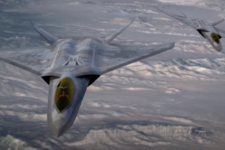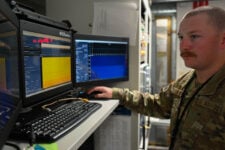
Deputy Secretary of Defense Kathleen Hicks. (DoD photo by Air Force Staff Sgt. Brittany Chase)
WASHINGTON — Unmanned systems acquired under the Pentagon’s Replicator initiative were delivered to warfighters “earlier this month,” Deputy Secretary of Defense Kathleen Hicks announced today.
However, the statement from Hicks does not share details on what system, how many or where they have been deployed — par for the course on the Replicator effort, which has been semi-shrouded in secrecy since Hicks announced it last year.
The delivery of the systems “shows that warfighter-centric innovation is not only possible; it’s producing real results,” Hicks said. “Even as we deliver systems, our end-to-end capability development process continues. Together with the private sector and with support from Congress, the Replicator initiative is delivering capabilities at greater speed and scale while simultaneously burning down risk and alleviating systemic barriers across the department.”
Asked for details what system has been deployed and where, spokesperson Eric Pahon said “We are not discussing specific timelines, systems or locations for delivery at this time for operations security reasons. We will continue to ensure Congress is fully informed on our progress.”
A potential answer for how Replicator was able to get systems under contract already is if the system in question is the AeroVironment Switchblade 600 loitering munition, the only confirmed system to be procured under Replicator to date. Notably, the Army had already placed a procurement order of Switchblade 600s last October, so it is possible the Replicator team simply piggybacked on that to speed things up.
According to AeroVironment, the Switchblade 600 has a range of roughly 25 miles and time on station of 40 minutes — not ideal for the infamous “tyranny of distance” in the Indo-Pacific, but potentially useful in an island hopping scenario against Chinese forces.
When Hicks unveiled Replicator in August 2023, she billed it as one avenue for countering China’s military mass by cranking out multiple thousands of “attritable autonomous systems” within two years — think unmanned surface vessels and loitering drones. However, specifics have largely remained under wraps, even as the department secured approximately $500 million in fiscal 2024 funding, and requested an equal amount in funding for FY25.
Ashley Roque contributed to this report.
Meet Sergeant Stout: Army gives Stryker-Based M-SHORAD a proper name
As the service rolls out a name change for the new(ish) air defense weapon, it is also eyeing future upgrades that could integrate with robots and new interceptors.


























